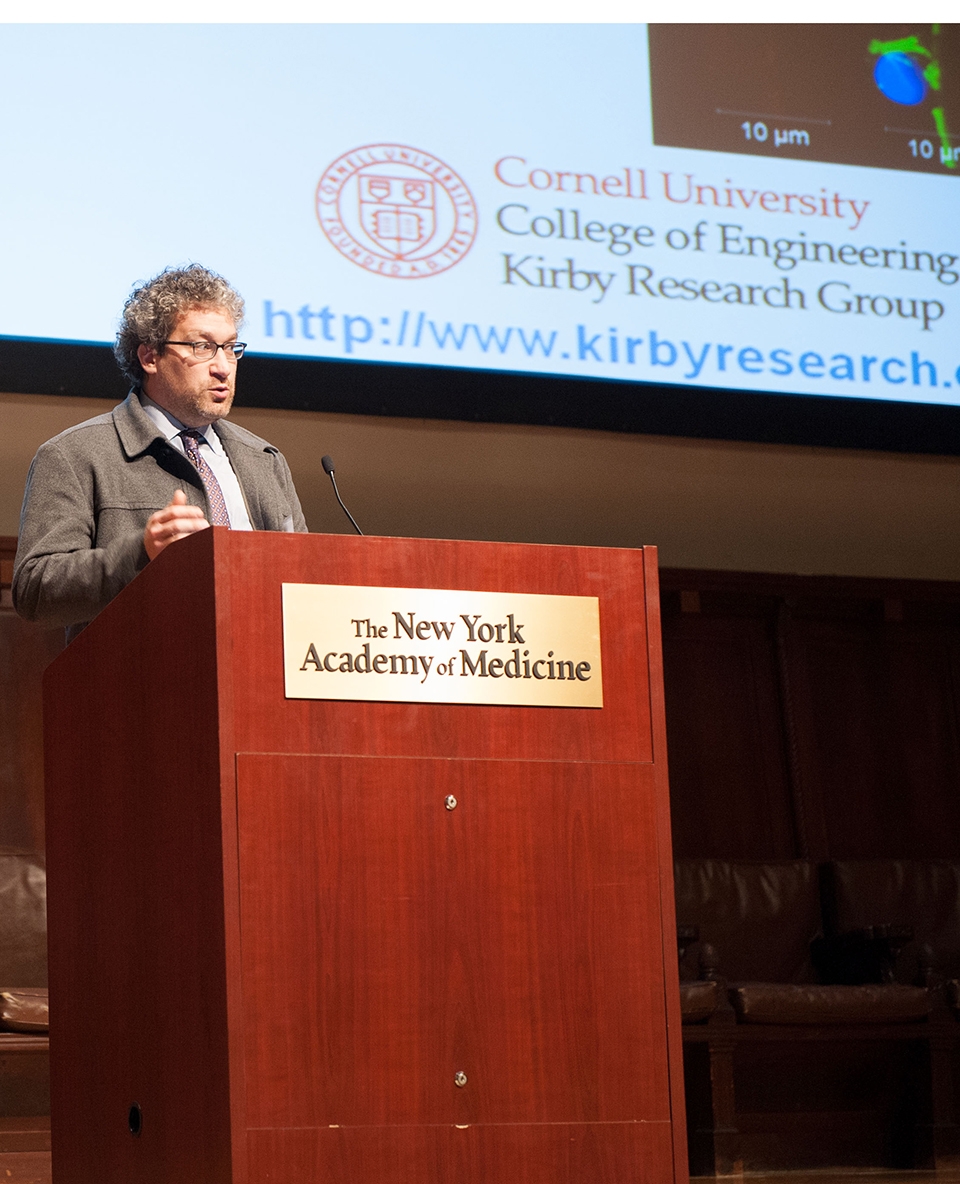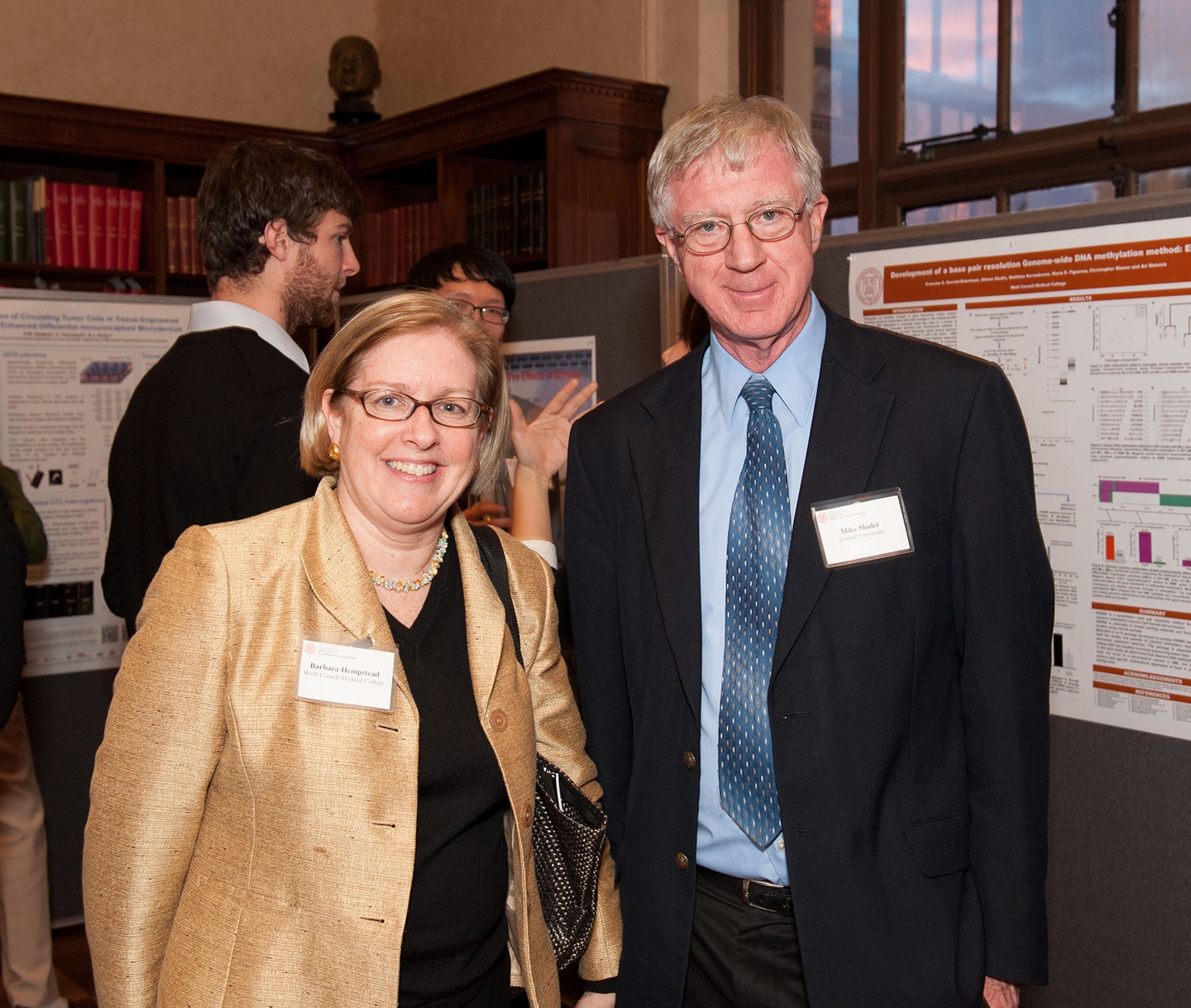President Richard Nixon's 1971 War on Cancer promised major advances in the battle against against cancer, yet deaths from the disease have barely budged since, dropping just 5 percent since 1950, according to the National Center for Health Statistics.
The main thrust of Nixon's effort was a law — the National Cancer Act — that would "strengthen the National Cancer Institute in order to more effectively carry out the national effort against cancer." In 2009, after decades of incremental progress, the NCI sought a new, and perhaps unexpected, ally: physical scientists.

Brian Kirby gives a presentation during the cancer symposium
"The NCI realized that the progress in fighting cancer was not going as rapidly as anyone really wanted it to go, and one of the groups of scientists that were not heavily engaged in cancer research were physical scientists," said Dr. Barbara Hempstead, the O. Wayne Isom Professor of Medicine at Weill Cornell Medical College, a leading oncologist and the principal investigator for numerous NIH research grants.
To bridge the gap, the NCI sought to establish twelve "Physical Science-Oncology Centers" (PS-OC) comprised of "trans-disciplinary scientific teams" that would "examine new, non-traditional approaches to cancer research." Cornell University and Weill Cornell Medical College applied in 2010 and were selected as one of 12 charter PS-OC centers, creating the Cornell University Center on the Microenvironment and Metastasis.
Dr. Michael Shuler, the James and Marsha McCormick Chair of Biomedical Engineering at Cornell University and director of the Center, described the union as "a natural extension." The existing relationship between the two institutions, based around previous collaborations of biomedical engineers with the faculty in the Neurological Surgery, Radiology, Orthopedic and Surgery Departments, allowed investigators to take up the NCI's challenge very quickly.
"We had to write this grant very quickly and the fact that we had a medical school partner facilitated that," Dr. Shuler said. "If we didn't already have a relationship with an institution it would have been much more difficult."
Now just three years later, the partnership has produced several promising projects. This fall, the Cornell University Center on the Microenvironment and Metastasis hosted a symposium titled "Understanding Cancer: Genomes to Devices" at the New York Academy of Medicine with the goal of presenting their latest work. Talks were given by team leaders from several institutions that also have PS-OCs, like the Dana-Farber Cancer Institute in Boston, the Moffitt Cancer Center in Tampa, and Weill Cornell's affiliated partner in Houston, the Methodist Hospital. More than 40 research posters were also presented.
One collaboration, between Dr. Jenny Chang, a professor of medicine at Weill Cornell Medical College and director of the Methodist Cancer Center in Houston, and Dr. Harold Craighead, a professor of engineering at Cornell University, uses physical sciences technology on a nanometer scale to capture chromosomal DNA from a single cell and examine its structure.

Dr. Barbara Hempstead and Dr. Michael Schuler at the cancer symposium
"Ultimately, we hope that this technology will be faster than the existing chemical process for extracting chromosomal DNA from cells," Dr. Craighead said. The long term aim of these studies is to have an integrated system that can take a sample from a patient and quickly produces the kind of profile that physicians can use to identify a predisposition to cancer or cancer metastasis before it is clinically evident, and to pinpoint changes in the DNA of cancer cells that would direct therapeutic decision.
However one of the most promising — and fastest-moving — projects is a collaboration between Brian J. Kirby, the director of the Micro/Nanofluidics Laboratory in the Sibley School of Mechanical and Aerospace Engineering at Cornell University, and Dr. David M. Nanus, the Mark W. Pasmantier Professor of Hematology and Oncology in Medicine and chief of the Division of Hematology and Medical Oncology at Weill Cornell Medical College.
Together, they have developed a device that uses fluid dynamics to capture circulating tumor cells, rogue cancer cells flowing through the body's blood stream that are detectable during cancer metastasis. Capturing these rare and hard-to-find cells may eventually help guide and personalize treatment decisions for individual patients. The GEDI Microfluidic Device will be used to capture and analyze circulating tumor cells in a multi-institutional Phase II clinical trial of 100 patients with prostate cancer. The analyses aimed at understanding mechanisms of chemotherapy sensitivity and resistance will be performed in the laboratory of Dr. Paraskevi (Evi) Giannakakou, associate professor of pharmacology in medicine and director of laboratory research in the Division of Hematology & Medical Oncology at Weill Cornell Medical College.
"This really shows what the PS-OC is trying to accomplish," said Dr. Nanus. "And we've done it — going from Cornell engineering to a sponsored clinical trial."

